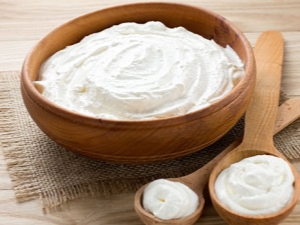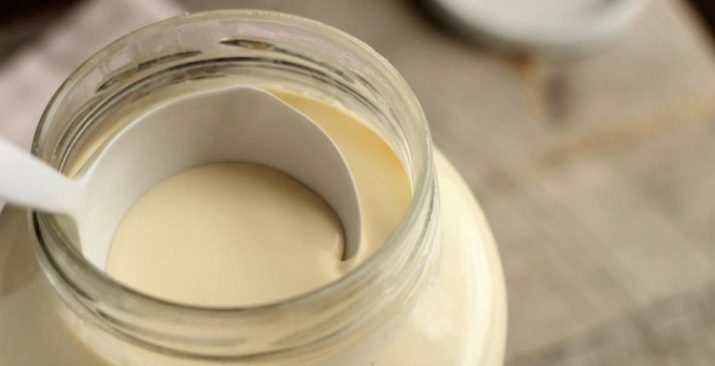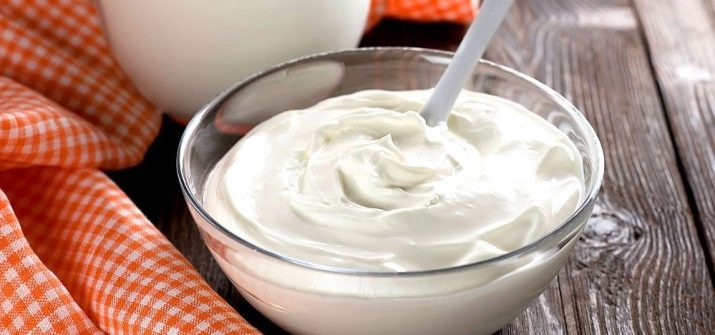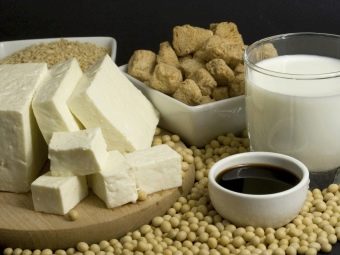Cream: features and uses

Cream has always been one of the most favorite delicacies, but, unfortunately, you cannot eat much.Nowadays it is ridiculous to even imagine that before they were available only to the rich or only to the royals.
What it is?
Cream is the fattest part of milk that is on the surface. This is especially evident after boiling milk.
Plants make cream from cow's milk, which in the production process is divided into two parts - fat-containing and skimmed. At home, the milk is just filtered and then settled. Then all the liquid is poured out - as a result, the cream remains.
The shelf life of home products of this kind usually does not exceed three days, but when manufactured in the factory, it is extended to 120 days. The processes that provide this property are called pasteurization and sterilization. Pasteurization is a more gentle treatment, with some of the nutrients remaining. When sterilizing those in the composition of virtually none.
Milk cream is produced with different percentage of fat: the lowest level –8%, and the highest - 65%. Among the modern varieties of cream can be distinguished drinking, canned, dry, vegetable, pasteurized, soy and air.
In addition to the usual dairy cream, so-called vegetable cream, which are made from vegetable fats, is also produced. Most often it is palm and palm kernel oil. The composition of this product, in addition to the fatty component, is added and milk, as well as various types of stabilizers, flavors and dyes. The product is not useful, but is used in small quantities in cooking.
What is different from sour cream?
Cream differs from sour cream in its consistency, as well as in taste. Both products are made from milk and contain a lot of fat - this is their similarity, but during the preparation of various dishes they cannot replace each other.
Cream is obtained from milk, and sour cream - from cream. The first product is made by settling milk, and the second by adding various microorganisms to it. Thus, it turns out that cream is a product of settling, and sour cream is fermented. The sweetish taste of cream is connected with this, as well as the sour taste of slightly settled sour cream.
There is a difference in the composition of these two products: if the cream goes well with drinks, fruit and pastries, then sour cream goes well with hot dishes, vegetables and savory pastries. Sour cream can sometimes be curtailed when interacting with hot dishes or products, which is not the case with cream. Of course, cream is a more fatty product than sour cream, since in the process of fermentation some of the fat is destroyed.
Composition and density
This product can be divided by density or by percentage of fat. into 4 main categories:
- non-greasy - fat percentage 10-14% per 100 g;
- low fat - the fat content in them can be from 15 to 19%;
- classic - such products contain from 20 to 35% fat;
- high fat - they have a record fat content - 50-60%, and sometimes more.
Cream contains the following components: fats, proteins, carbohydrates, mineral salts, folic acids. Also in this product there are various vitamins: A, almost all the vitamins of group B, C, E and D. The amount of fats, proteins and carbohydrates in cream with different percentages of fat content varies. For example, 10% cream contains 2.7 g of proteins, and 20% contains 2.5 g. In the first product, the content of fat per 100 g is 10 g, and in the second, 20 g.
Obviously, the number of calories depends on the percentage of fat content. In 10% cream the number of calories is 119, in 20% - 207, in 35% - 337 calories per 100 g. For this reason, cream with even the lowest percentage of fat is not recommended for regular use by losing weight.
Benefit and harm
Cream is considered to be a concentrate of useful substances: only one vitamin A contains several times more than the same amount of milk - the same applies to the calcium content.It is important to clarify that all nutrients are stored only in natural and unsterilized product.
Cream masks are good for hair and skin. They are well absorbed and have the effect of lightening and moisturizing.
Cream is recommended for use during breastfeeding, as they are known for their ability to restore the body after intense physical exertion and exhaustion, which are, for example, recently experienced childbirth. During breastfeeding, a high content of vitamins and trace elements will have a beneficial effect on the quality of milk.
The damage from the cream is also there. The most common problem in this regard is individual protein intolerance. Now this feature of the body's reaction to dairy products has become increasingly common.
Excessive consumption of cream can not only contribute to weight gain, but also significantly increase the level of sugar and cholesterol, and children under three years are not recommended to use them due to excessive density of the product.
Varieties
All produced cream is divided into several types of manufactured milk raw materials:
- normalized (from ordinary milk);
- recovered (from powdered milk);
- recombined (from various components and milk derivatives);
- mixed (the same recombined, but with the addition of milk powder).
Since cream is a fat, and sometimes a thick product, it is quite problematic to use it dry for most people. Most often they are an additive for coffee or tea. For drinks, a portion of cream was specially developed and supplied for permanent production. Now they are actively purchased by small cafes and various organizations in the service or transportation sector. Such cream requires a long storage period, so they undergo pasteurisation.
The home product is stored for no more than 2-3 days, after which it starts to turn sour. Taking into account the fact that it is impossible to use this product in large quantities at one time, it is recommended to buy pasteurized cream in order to be able to use it for quite a long time, and not to send almost full packaging in the bin after 3 days. Since 2000, gained popularity in the cream in the balloon. They are especially fond of confectioners.
Unfortunately, this product contains a lot of preservatives and sugar, so it is recommended to use it in limited quantities.
Lactose-free cream is produced for people with lactose intolerance, and the absence of lactose does not affect the taste of the product at all. Soy cream is not made from cow's milk, but from soy. They are a vegetarian and raw food product. Great for those who are sensitive to the issues of health and proper nutrition.
Application Methods
10% fat cream is used as an additive to coffee or tea, while a product with a high fat content is used to decorate various kinds of baking and for sauces.
Few people know that cream is used in traditional western medicine. They are a source of casein and lecithin, which produce only from a product with low fat content (up to 14%). These two substances are components of a variety of dietary supplements and drugs.
A mixture of carrot juice and this dairy product helps relieve swelling and improve the functioning of the kidneys, and when mixed with honey and consumed on an empty stomach, you can settle the work of the sex glands.
Is it possible to freeze?
Such a question most often begins to ask when too much of this high-fat product was purchased. Part of the product was used, and a larger volume remained unwanted. Too fat product is difficult to eat.
Obviously, the air cream in the balloon cannot be frozen - after defrosting, such a product ceases to be airy and will spread.
As for the usual liquid products, it is also not recommended to freeze them in large quantities, since after defrosting such a product begins to stratify into various components: fat, water and other ingredients. It is best to freeze in small volumes, for example, 50 ml. It is convenient to use such portions when cooking various dishes, for example, julienne or sauces. Use them as an additive to coffee or whisk after defrosting will not work.
How to make a delicate cream cupcake, see the next video.





























